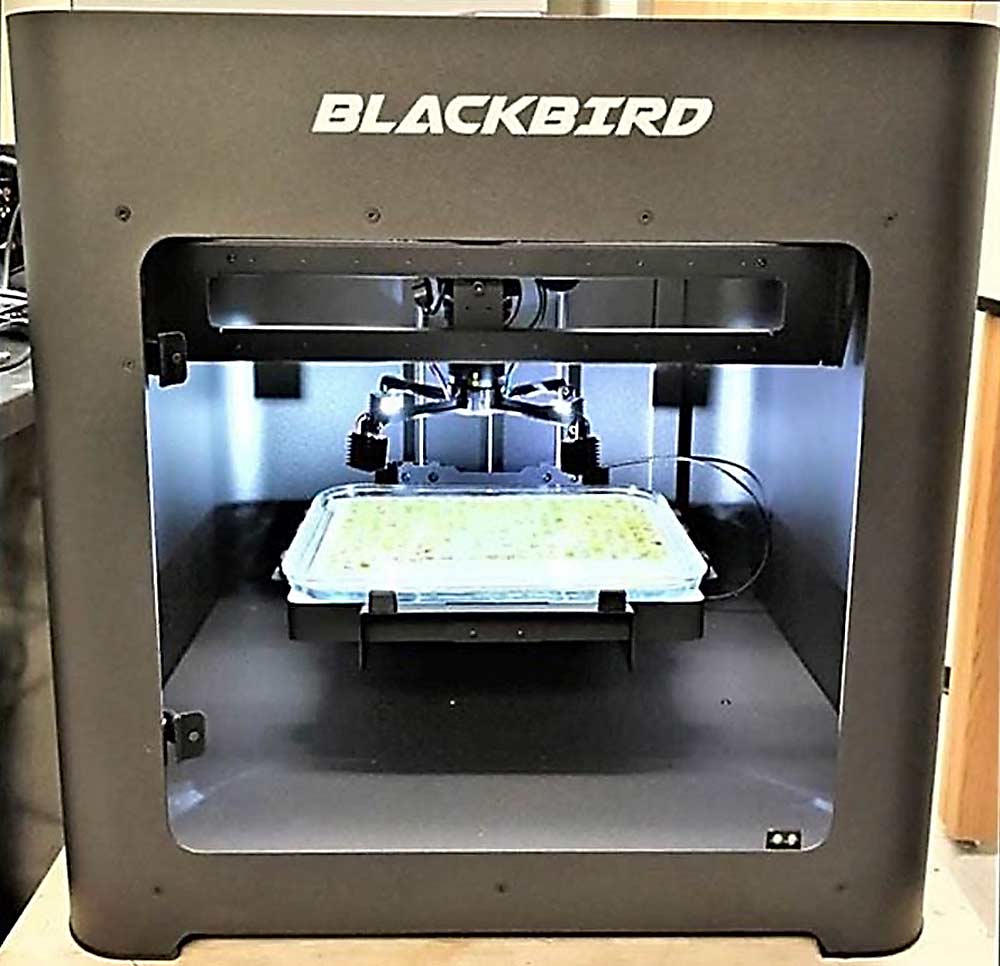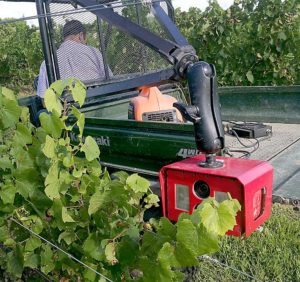
Public and private breeders of commodity crops such as maize and soybeans have long used sophisticated bioinformatics, statistical tools and “big data” to guide their breeding programs. These tools increasingly leverage detailed DNA sequence information to predict the performance of each crop’s breeding lines — and ultimately help breeders release improved varieties more quickly.
But these sophisticated, expensive breeding tools have not been available to breeders of smaller-scale specialty crops. So, specialty crop breeding has relied heavily upon field observations (phenotyping) and the breeder’s individual knowledge and experience in making crosses and selecting (or discarding) progeny. Specialty crop breeding has been as much of an art as a science.
Dramatic drops in the cost of DNA technologies have now made genetic data abundant and financially accessible to specialty crop breeders. In grapes, for example, obtaining high-quality whole-genome sequences of the approximately 500 million DNA base pairs on 19 chromosomes has dropped in cost from millions of dollars in the early 2000s to about $3,000 per accession today.
Now specialty crop breeders have access to a torrent of new DNA sequence data. But they still lack the infrastructure and access to bioinformatics that commodity crop breeders have enjoyed for decades.
USDA’s Breeding Insight project
Breeding Insight was established in 2018 by the U.S. Department of Agriculture’s Agricultural Research Service to provide these resources to specialty crop breeding programs. According to project director Moira Sheehan, its purpose is to bring sophisticated data analysis and bioinformatics to certain specialty crops.
“We build software that helps our breeders manage their program, use new tools and technologies, build new capacities in their program, and to streamline their processes, getting rid of waste. We help our breeders decide where to prioritize their resources to meet their goals,” said Sheehan.
Initially, the program worked with six plant and animal crop species as the focus of USDA-ARS breeding programs, including blueberry and table grapes. New crops added to the project this year include cranberry, pecan, lettuce, cucumber, honey bee, oat and strawberry.
The Breeding Insight team includes biologists, programmers and communications specialists.
Collaboration with VitisGen2
Grapes were selected for inclusion in the Breeding Insight program in part because of a long-standing USDA-ARS table grape breeding program, based in Parlier, California — but also because of the nationwide VitisGen (2012–2016) and VitisGen2 (2017–2022) projects, funded through the USDA’s Specialty Crops Research Initiative. VitisGen2 project co-leader Lance Cadle-Davidson, a USDA-ARS plant pathologist based at Cornell AgriTech, cited the project’s existing emphasis on DNA mapping and marker-assisted selection as a benefit to Breeding Insight:
“One of the reasons why we were chosen is that among the specialty crops,VitisGen2 has set a solid foundation for genotyping and DNA marker analysis, along with advanced phenotyping methods,” said Cadle-Davidson.
He and Rachel Naegele, another USDA-ARS scientist working on VitisGen2, work closely with Breeding Insight.
“As a grape group, whenever we meet with Breeding Insight there’s always university breeders, too, such as Bruce Reisch (Cornell University) and Matt Clark (University of Minnesota), plus Craig Ledbetter, who is the USDA breeder at Parlier,” he said.
Other key collaborators from Cornell on the bioinformatics side of VitisGen2 include Cheng Zou, a postdoctoral bioinformaticist; Avi Karn, a postdoctoral geneticist who has now moved on to private industry; and Qi Sun, co-director of the Cornell Bioinformatics Facility.
Benefits to Breeding Insight
When asked how the collaboration with VitisGen2 benefited Breeding Insight, Sheehan cited the strong support from industry groups such as the National Grape Research Alliance. The group includes representatives of the table, raisin, wine and juice grape sectors of the industry — who championed the project.
“Most (specialty crops) don’t have a very good centralized, organized coalition that can go to bat for them, nor can they decide from a pool of available research what is going to be the most beneficial to them,” said Sheehan. For many crops, “getting communication back up the food supply chain to breeders is really difficult. VitisGen2 does that.”
Sheehan also cited VitisGen2’s pioneering work in high-throughput phenotyping, especially to quantify variability of vine response to powdery mildew in the laboratory (see “From facial to fungal recognition”).
Genomic characterization of USDA grape germplasm collections
The USDA-ARS curates two extensive Vitis germplasm collections at Cornell AgriTech in Geneva, New York, (cool-climate accessions) and University of California, Davis (cold-sensitive accessions). Breeding Insight and VitisGen2 are jointly funding an effort to map the genomes of the 7,000 accessions housed at the two locations.
Using the rhAmpSeq platform developed by VitisGen2, each accession will have 2,000 DNA markers that cover 99 percent of the 19 grapevine chromosomes — creating the most detailed genotypic dataset for grapevine ever, said Sheehan.
“If we can capture all that genetic diversity, it will actually speed up our analysis of breeding lines and help us identify the genetic basis of desirable traits,” Cadle-Davidson said. “It’s akin to Google going out and scraping words from all the websites so that they can run their search algorithms faster.”
The future
For specialty crop breeders, knowledge gained from a career in observing a plant’s traits (phenotypes) has been far more important than knowing about its specific genetics.
“Many breeders may know a little bit about the pedigree, but what they’re doing is making selections based on know-how or art,” Sheehan said. This relies on generating high numbers of potential breeding lines. “It’s like the lotto. You plant out 30,000 lines and advance 3,000, based on your gut feeling or the plant’s appearance.”
Marker-assisted selection supplements breeders’ knowledge with genetic information, allowing them to increase efficiency and stock the breeding pipeline with better specialty crop selections. While the marker-based approach relies on a few key regions of the genome, moving toward genomic selection will assign a value to the whole genome of an individual candidate for breeding. This is analogous to information collected over decades by animal breeders, such as the Dairy Herd Improvement Association, which uses production information to identify elite bloodlines and guide artificial insemination programs.
Moving from the “art and personal knowledge” style of breeding to a more quantitative approach involving high-throughput phenotyping and detailed genetic information will pay dividends for specialty crop breeders and growers.
“There is tremendous value in capturing the art of breeding in a database for modern analytical tools to predict why the artist was successful — what traits were selected and, as importantly, what failed,” Cadle-Davidson said.
The technology will also help breeding programs transition. When breeders retire, “they need to be able to hand off to the next person to continue the development,” Sheehan said. “If I can convince them to put something in a data management system and secure their data, it then becomes accessible to other people.”
The collaboration between Breeding Insight and the VitisGen programs has already yielded rich results for grape breeding programs. To date, the two VitisGen projects have discovered over 70 DNA markers identified in grape genes for fruit quality and disease resistance traits. Together, these programs are providing the grape industry with exciting, cutting-edge bioinformatics tools and processes to enhance their breeding programs, adding valuable quantitative information to the ancient art of the breeder and turbocharging breeding programs to produce improved varieties better and more efficiently.
—by Michelle Podolec and Tim Martinson
Michelle Podelec is an extension support specialist at Cornell AgriTech and Tim Martinson is the statewide extension viticulturist at Cornell AgriTech. Funding for VitisGen2 is provided by Specialty Crop Research Initiative Competitive Grant, Award No. 2017- 51181-26829, of the USDA National Institute of Food and Agriculture. Breeding Insight is funded by the USDA Agricultural Research Service through a grant to Cornell University.







Leave A Comment